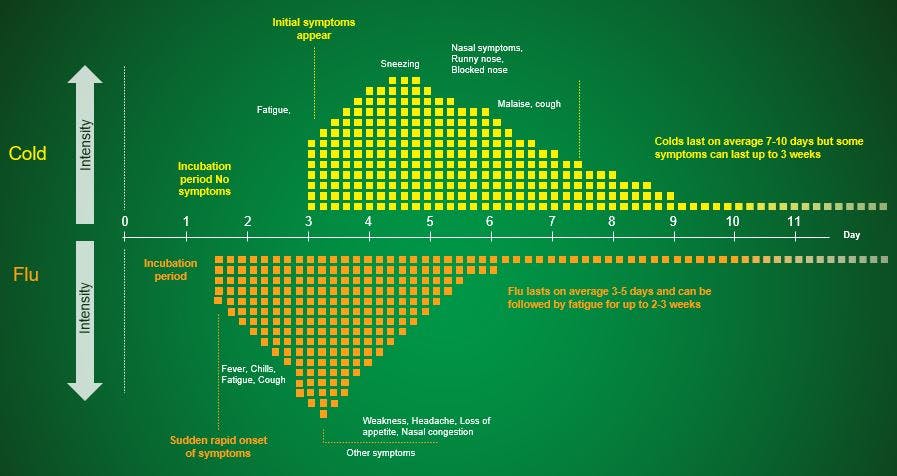Flu: Signs and Symptoms

Recognising the flu
The flu can cause severe illness and significant negative impacts on quality of life,1,2 so it helps to understand how to identify this viral disease.

Signs and symptoms
Both colds and flu may share similar and overlapping symptoms,3,4 including:
- Headache
- Sore throat
- Runny nose
- Nasal and sinus congestion
- Cough, usually dry5
- Sneezing
- Malaise4
The flu usually presents with sudden onset and may also cause additional symptoms such as:
- High fever lasting for 3-4 days6
- Severe myalgia
- Fatigue and weakness that may last 2-3 weeks or more
- Chills
- Loss of appetite7-11
The symptoms also affect quality of life by reducing alertness,12,13 causing a negative mood,12,13 performance reduction,13 slower reaction times,14,15 and disturbed/poor sleep2,14
An influenza infection has the potential to deteriorate into pneumonia and respiratory failure, and may be life-threatening.10,11
Understanding the flu
Learn more
Patient care resources
Access a leaflet for your patients, which can help them understand the causes of the flu and how best to treat it.

